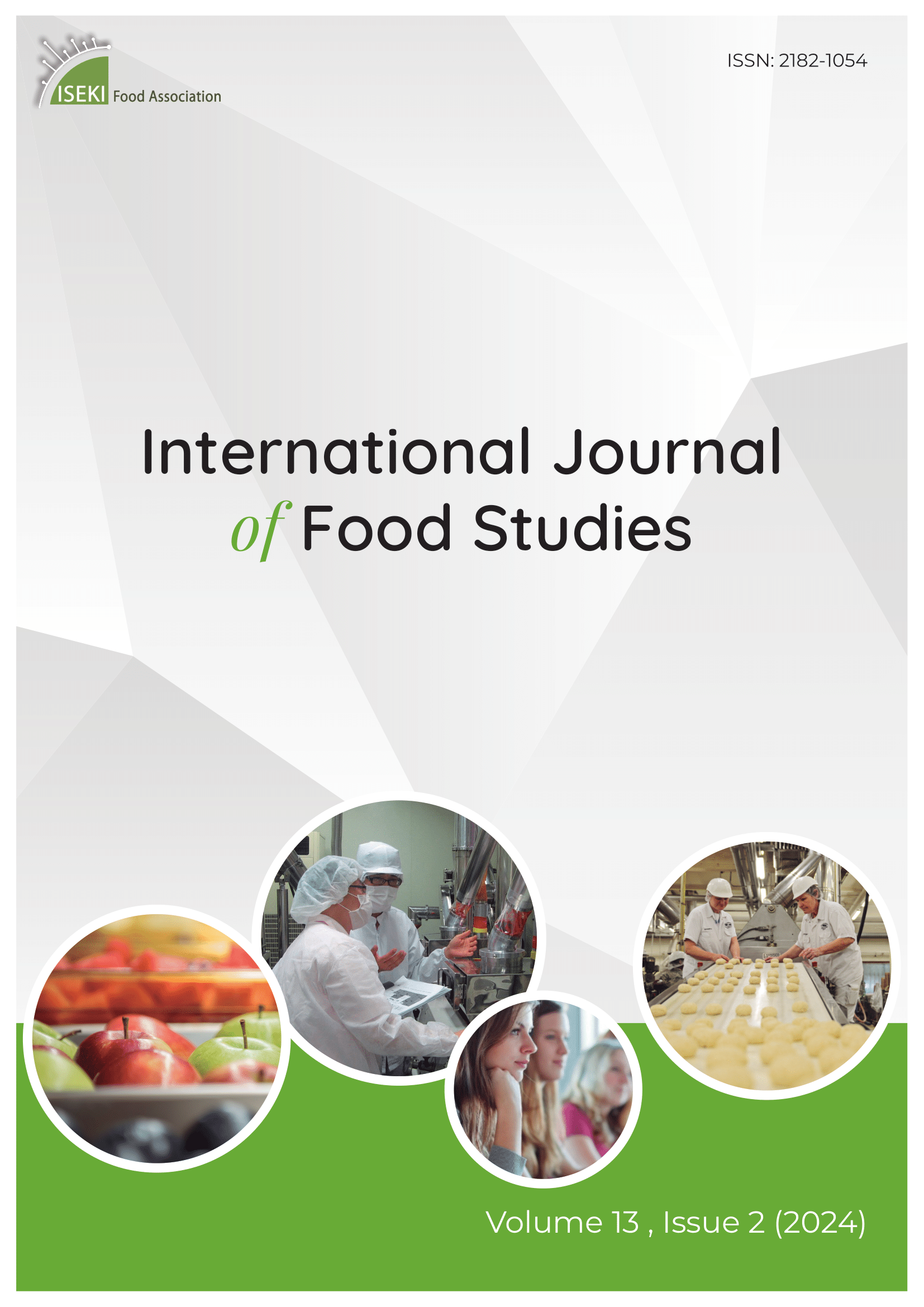Current issue

Volume 13, Issue 2, 2024
Online ISSN: 2182-1054
Volume 13 , Issue 2, (2024)
Published: 18.10.2024.
Open Access
All issues
Contents
18.10.2017.
Original scientific paper
Influences of physicochemical stresses on injury and inactivation behaviour of Listeria innocua
Many minimally processed foods depend on a combination of inhibitory factors to reduce the hazard of foodborne illness. Therefore, inactivation of Listeria innocua was studied according to a 24 factorial experiment designed to draw conclusions about temperature (52.5 °C and 65.0 °C), pH (4.5 and 7.5), water activity (aw=0.95 and 0.99) and solute type (NaCl and glycerol) effects. Three different recovery media were used to assess injured cells. Survival data were fitted with a Gompertz-based model and kinetic parameters (shoulder, maximum inactivation rate – kmax, and tail) were estimated. Results showed that shoulder was affected by temperature, pH and combined effects; kmax was influenced by all factors and their combinations; and tail was affected by aw, temperature and aw/pH combination. Results demonstrated the potential occurrence of microbial cross-protection survival techniques between the various stresses, e.g. heat and osmolarity. Indeed, this work clearly established that, to avoid hazards, Listeria inactivation must be evaluated with a maximum of environmental factors that undergo alterations. Only thus, appropriate food preservation treatments can be developed and consequently, the safety of food products can be assured.
Fatima A. Miller, Barbara Ramos, Maria M. Gil, Teresa R. S. Brandao, Paula Teixeira, Cristina L. M. Silva
18.10.2017.
Original scientific paper
Effect of tuna skin gelatin-based coating enriched with seaweed extracts on the quality of tuna fillets during storage at 4 °C
Nowadays, consumers demand high quality food products with an extended shelf-life without chemical additives. Edible coatings (EC) containing natural compounds are a promising preservation technology for raw seafood without compromising fresh-like appeal and nutritional content. The aim of this work was to evaluate the effect of Thunnus obesus skin gelatin-based EC containing Codium spp. or Fucus vesiculosus extracts on raw tuna preservation. Three gelatin-based EC (gelatin (5 %) + glycerol (25 %); gelatin (5 %) + Codium spp. (1 %) + glycerol (25 %); gelatin (5 %) + Fucus vesiculosus (1 %) + glycerol (25 %)) were applied directly on the surface of tuna fillets. Functional properties of gelatin and gelatin-based EC containing seaweed extracts were also studied. The gelatin was extracted by an acid-swelling process in the presence/absence of pepsin, followed by subsequent heating/refrigeration, after a pre-treatment with NaOH. The type of acid, temperature and concentration of NaOH greatly influence the process yield. The higher extraction yield was achieved using acetic acid in the presence of pepsin by subsequent refrigeration, especially when skins were previously treated with NaOH (0.2 M). Tuna quality was assessed over 12 days of storage at 4 ± 1 °C in terms of chemical and microbial indices. Results showed that tuna skin gelatin-based EC avoids tuna deterioration. Microbial growth, assessed by total viable counts, and total volatile basic nitrogen were maintained below the maximum limits recommended, contrarily to the control. Additionally, the use of EC increased the stability of red colour during storage.
Milene Vala, Ana Augusto, Andre Horta, Susana Mendes, Maria M. Gil





